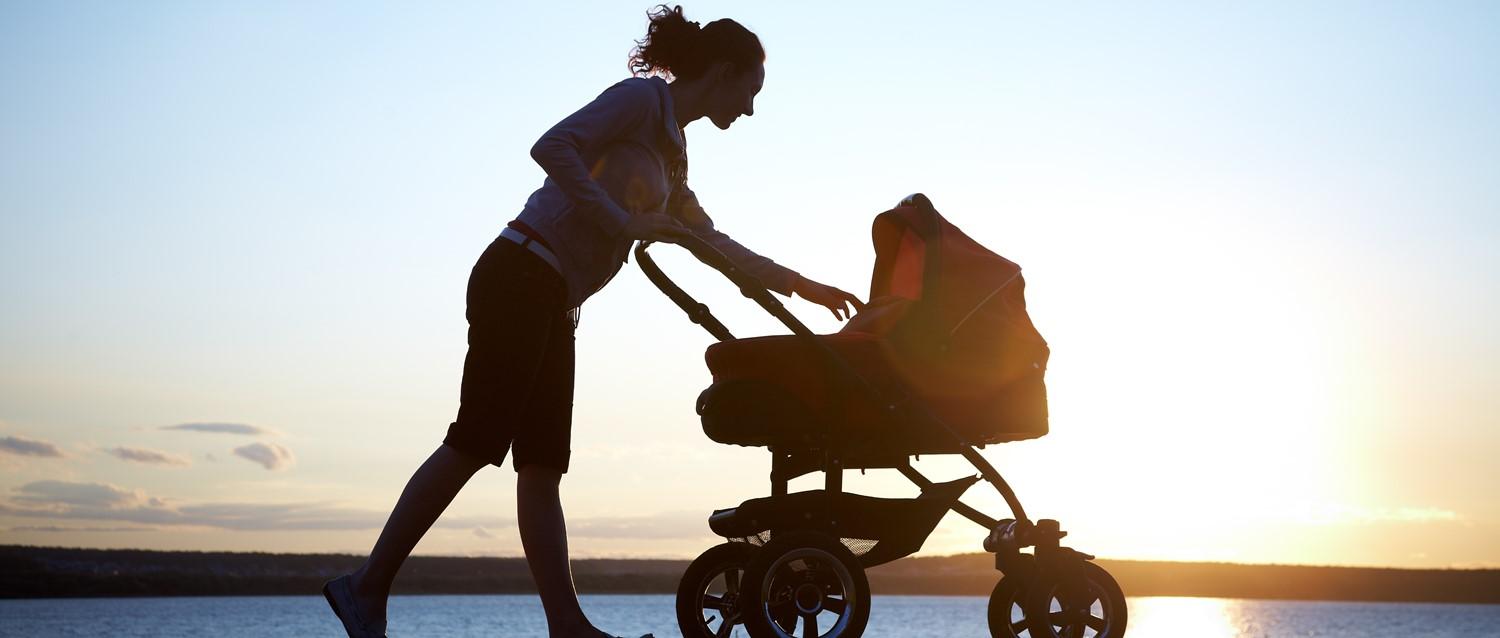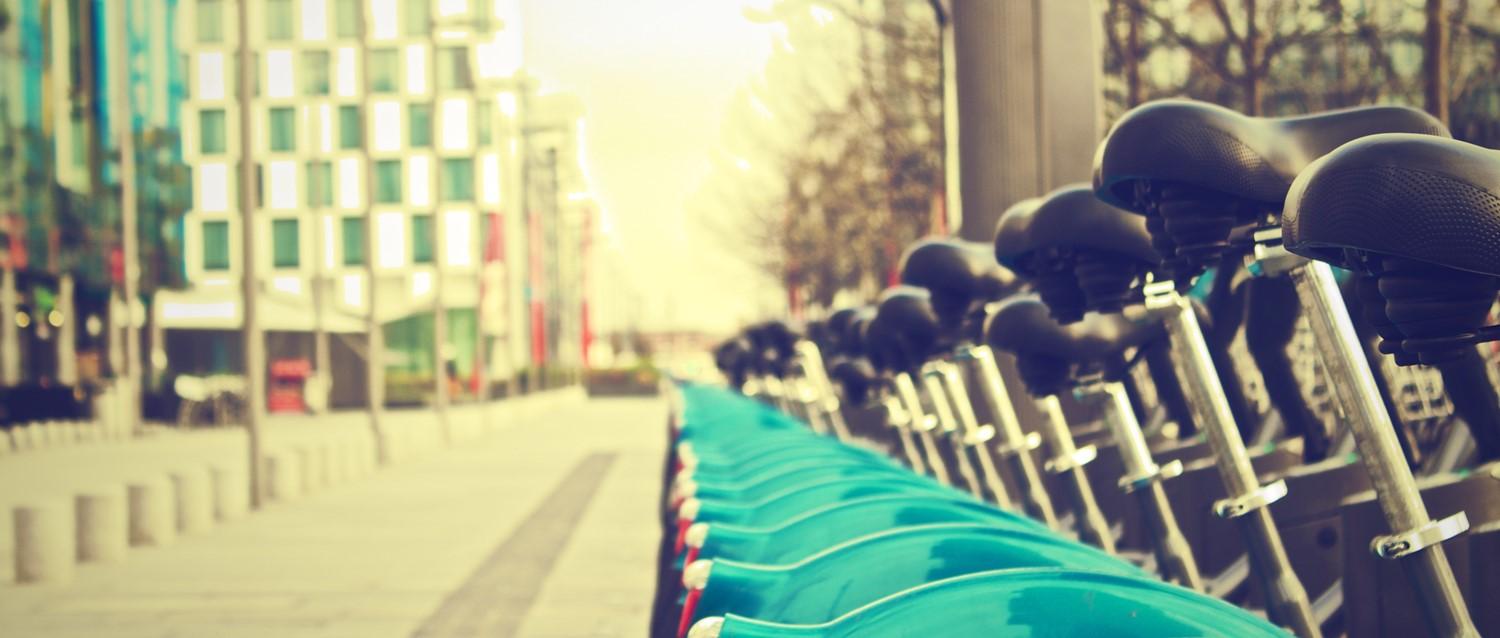
How to get back into exercise after having a baby
Peer reviewed by Dr Sarah Jarvis MBE, FRCGPAuthored by Emily Jane BashforthOriginally published 19 Jan 2022
Meets Patient’s editorial guidelines
- DownloadDownload
- Share
- Language
- Discussion
If you're pregnant, or recently gave birth, you might be wondering when you can start exercising again, particularly if you were previously a regular gym-goer. However, it's important that you venture back into exercise slowly and safely. It's also good to know the top safe postpartum exercises for your core and rebuilding strength.
In this article:
Continue reading below
How long should you wait after giving birth to start exercising again?
Sarah Campus is a personal trainer who specialises in pregnancy and postpartum diet and fitness. She says if you have had a vaginal birth it is advised to wait six weeks before starting high-impact exercise again. If you have had a caesarean section, it is advised to wait 10-12 weeks before this sort of exercise.
"In both instances, you should get clearance from your healthcare professional that you can get back into exercising if you've had complications or health problems. Having said that, you can and should start pelvic floor exercises straight after birth." In addition, gentle stretching exercises, walking and activities of similar intensity are actively encouraged as soon as you feel up to it, or your baby is asleep long enough to allow it!
Campus explains how the reasons for waiting before returning to exercise are to protect you and your health.
"Labour and birth can cause physical problems, including back pain and a leaky bladder, both of which can be made worse by vigorous exercise. Pregnancy hormones can also affect your joints and ligaments for up to six months after the birth, putting you at greater risk of injury. Therefore, it is very important to take your time, listen to your body and ease yourself back into exercise gently."
What are the dangers of exercising straightaway after childbirth?
"The structural and hormonal changes that happen during pregnancy don't just disappear as soon as your baby is delivered. Overdoing it after pregnancy can result in urine or faeces leakages, pelvic discomfort, joint pain and even injury," says Campus.
She emphasises the importance of taking it gently after a life-changing event like childbirth.
"The most important thing to do is to rest and enjoy those early stages of parenthood that you'll only experience once. You should also aim to sleep as much as possible so your body can heal properly from the inside out."
Campus further emphasises how you should start off with light exercises, rather than diving straight back into your intense workout regime.
Low-impact workouts can be walking or postpartum exercises, as opposed to running or HIIT workouts. You should stop immediately if you feel any pain while exercising.
If you jump back into intense exercise too soon, it poses major risks to your healing process.
C-section healing
Several layers of tissue are cut in order to get your baby out, each of which needs time to heal. Exercising too soon after birth can harm the fascia in particular, which is the connective tissue that wraps around your organs to support them.
Exercising too early following a c-section can prevent this tissue (which basically holds your intestines inside you) from healing properly. This could lead to a hole forming in the fascia and, if the incision in your fascia opens back up, you could develop an incisional hernia. While this could cause mild symptoms, in a worst case scenario, an incisional hernia occasionally requires emergency surgery.
As well as the fascia, other layers that need time to heal include:
Your uterus.
Your rectus muscles.
Your subcutaneous tissue.
Your skin (the only part of the surgery you can actually see).
Vaginal birth healing
More than 2 in 3 people experience a vaginal laceration, where the baby's head tears their vaginal tissue, during vaginal delivery.
There are four types of lacerations (first-degree, second-degree, third-degree and fourth-degree) and each one is deeper than the next.
First-degree lacerations are very superficial (affecting only the skin of the perinerum) and often heal by themselves, while second-degree lacerations are a little deeper and the most common. They are repaired with stitches. Meanwhile, third-degree lacerations are deep and reach the outermost part of your anus.
Fourth-degree lacerations are not as common, but involve your vagina tearing all the way through to your rectum and requiring extensive repair.
So, if you start exercising vigorously again too soon after giving birth via a vaginal delivery, your stitches could pop and you could bleed. It's safe to wait the recommended time of a couple of weeks to allow your stitches to heal.
If you are part of the minority who did not require stitches, you should still be aware of the risks of working out too soon after birth. Most of all, you need to be patient with yourself.
Continue reading below
The pressure to 'bounce back' after giving birth
In a society where there's often comparison between pre-baby and post-baby bodies, there's a lot of pressure on new mums to look a certain way. However, that isn't reality. Your body will most likely change after growing another human, and that is normal.
Succumbing to pressure to 'bounce back' and 'get your body back' straight after childbirth can do a lot of damage to both your physical and to your mental well-being. If you are struggling with your body image either during pregnancy or afterwards, you should communicate these feelings to your loved ones and healthcare team.
Campus says she has worked with hundreds of women and understands that everyone's pregnancy journey is different, as is their postpartum journey.
"No one knows how their labour is going to go, or how they are going to feel postpartum. I have some clients who are very keen to get back to exercising while enjoying motherhood, and others who are happy to wait and to just concentrate on their newborn," she says.
What Campus personally tells new mums is that their 'pre-baby' body actually never went anywhere, but rather has become stronger.
"Female bodies are so powerful with their ability to grow and birth a baby. We should embrace and celebrate that, rather than put pressure on people to 'snap back' or be more worried about how they look than about the health of their baby."
Campus' top tips for working out as a new mum
Listen to your body and respond to what it needs.
Seek advice from a prenatal/postnatal exercise specialist to ease you back into exercise safely and with confidence.
Start with pelvic floor exercises and core rehabilitation exercises to heal from the inside.
Begin with light, low-impact exercises, building up to brisk walks pushing the pram, body weight workouts and then slowly adding in strength and resistance.
Include your little ones into the workouts; be their role model and show them how happy it makes you feel.
Do your workout when your baby naps or with your baby in the baby carrier so long as it is correctly fitted.
Join a postnatal fitness class so you can make friends at the same time.
And if you're struggling ...
Campus puts emphasis on how there isn't a rush to get back into exercise. It isn't a competition with other new parents or other women, and taking your time is the best thing for your body as it adapts to the changes it has endured.
"Your body has just gone through the most incredible and powerful thing of growing a baby for nine months and birthing it. There is no rush at all to return to exercising quickly. You should enjoy being with your new bundle, even if that means pushing exercise down your list of priorities. When you are ready to begin exercising, think about doing it, not only gently, but in ways that make you feel good and energised. For example, going outside for fresh air and gentle walks does wonders for your mental health."
She also acknowledges how difficult this period can be in terms of body image, and recommends bonding with others at a fitness class who are on the same journey as you, or including friends in your post-pregnancy workouts.
"It's also a good idea to buy new fitness gear if you're able to, so you can feel good in what you are wearing," adds Campus.
Continue reading below
Tips for staying safe
When you first start exercising after childbirth, try simple postpartum exercises that help strengthen major muscle groups, including abdominal and back muscles.
Aim to keep your activity between 20-30 minutes per day.
Ensure that you have checked for diastasis recti (separation of the two muscles that run lengthways down the middle of your tummy) before commencing core rehabilitation.
Gradually add moderate-intensity exercises.
Don't overdo it and do rest when you need to.
What exercises are best after giving birth?
Campus recommends a range of specific exercises both for core and strength postpartum.
Top postpartum core exercises
Diaphragmatic breathing with pelvic floor kegels.
Heel slides.
Toe taps.
Leg extensions.
Double leg lowers.
Top postpartum strength exercises
Kneeling rows.
Ball squat.
Lunges.
Squats.
Dietary advice
Alongside exercising after giving birth, it's important to eat balanced meals. Campus recommends thinking of colour on your plate. She also stresses the importance of protein with each meal to help repair your muscles.
"In addition, ensure you also have enough whole grains for fibre, along with fresh fruits and vegetables (the darker the colour, the more nutrients it's likely to have). Have enough calcium and fluids generally to ensure you stay hydrated and that your bones stay strong."
Campus also urges you not to forget about healthy fats (such as nuts and seeds), and always to think about what you can add into your meals as opposed to taking out or restricting.
Patient picks for Exercise and physical activity

Healthy living
Will future towns and cities focus on fitness?
In a 2017 speech, Baroness Tanni Grey-Thompson accused UK town planning laws of favouring the opening of fast food outlets over new gyms and fitness hubs. The Paralympian is undoubtedly on to something, but it will take more than the shuttering of fried chicken shops to tackle the growing public health crisis in our towns and cities.
by Ross Davies

Healthy living
How to maintain your fitness New Year's resolutions
Many of us like to set New Year's resolutions, and often vow to start exercising more or become healthier. However, on average, 80% of New Year's resolutions fail by the second week of February and fitness resolutions in particular can be challenging to keep up. So, how can you maintain your fitness goals when the urge to stay in bed rather than jog to the gym on a cold January morning is just so strong?
by Lynn Stephen
Continue reading below
Article history
The information on this page is peer reviewed by qualified clinicians.
19 Jan 2022 | Originally published
Authored by:
Emily Jane BashforthPeer reviewed by
Dr Sarah Jarvis MBE, FRCGP

Ask, share, connect.
Browse discussions, ask questions, and share experiences across hundreds of health topics.

Feeling unwell?
Assess your symptoms online for free
Sign up to the Patient newsletter
Your weekly dose of clear, trustworthy health advice - written to help you feel informed, confident and in control.
By subscribing you accept our Privacy Policy. You can unsubscribe at any time. We never sell your data.